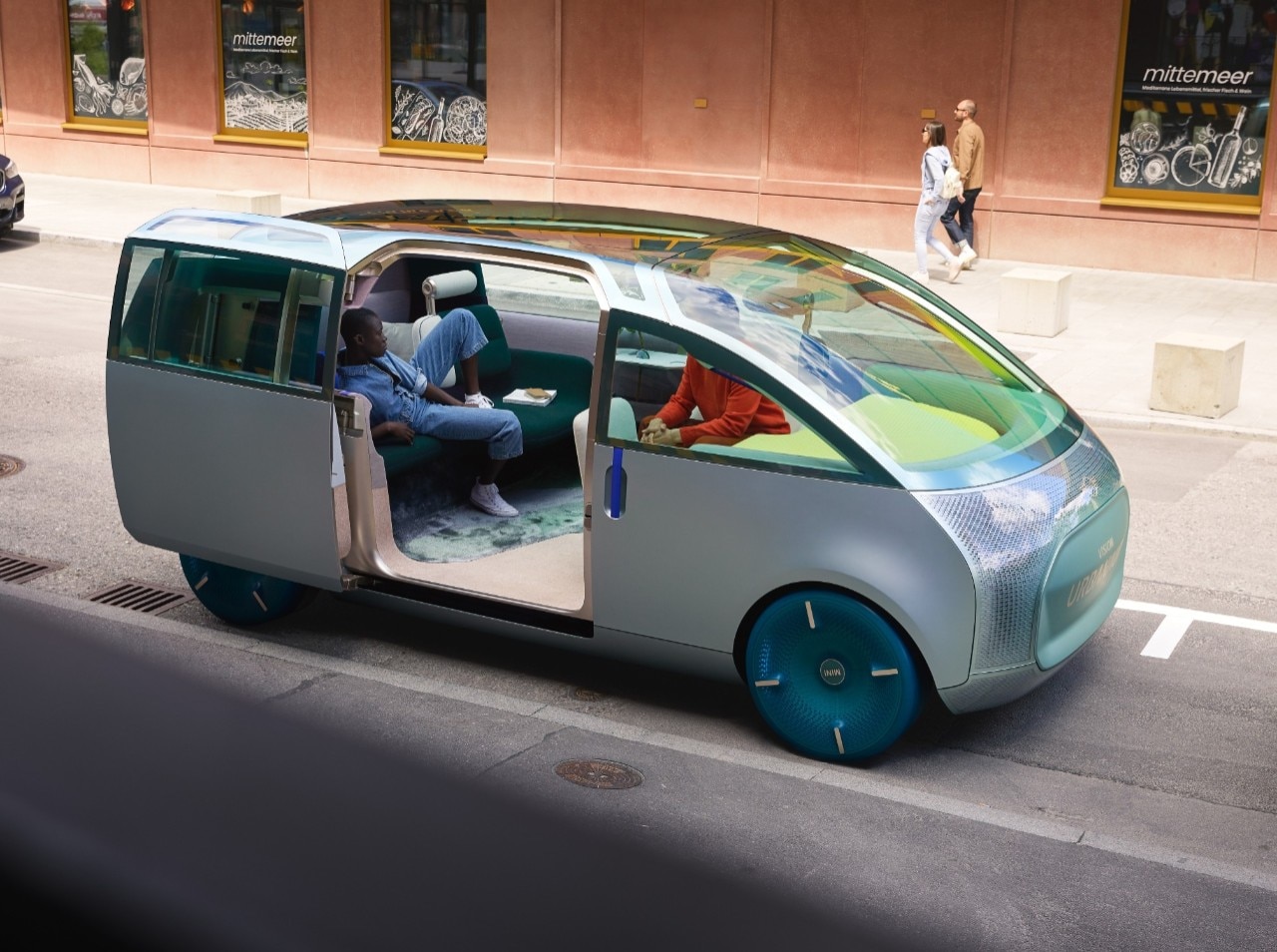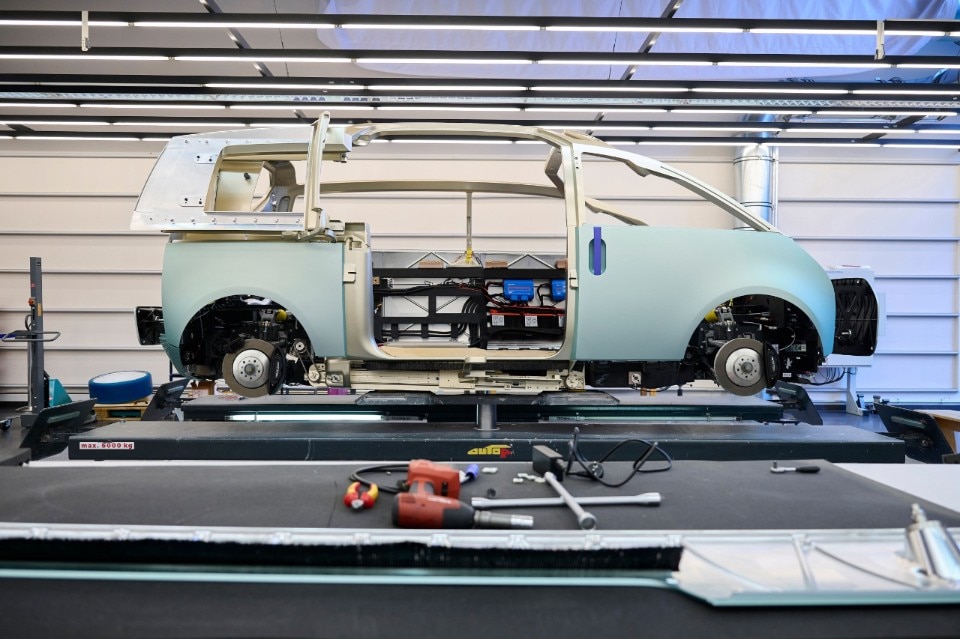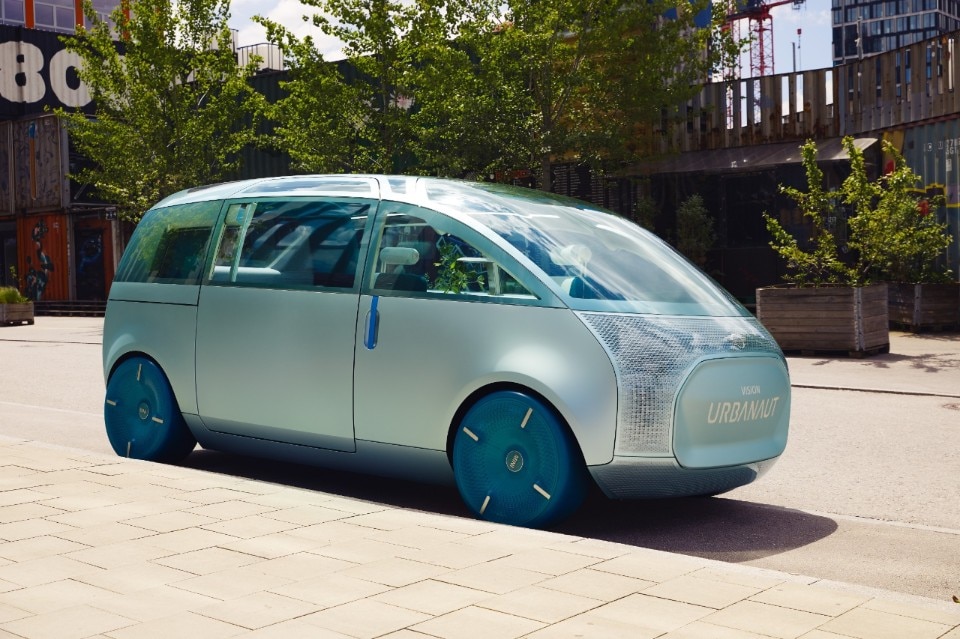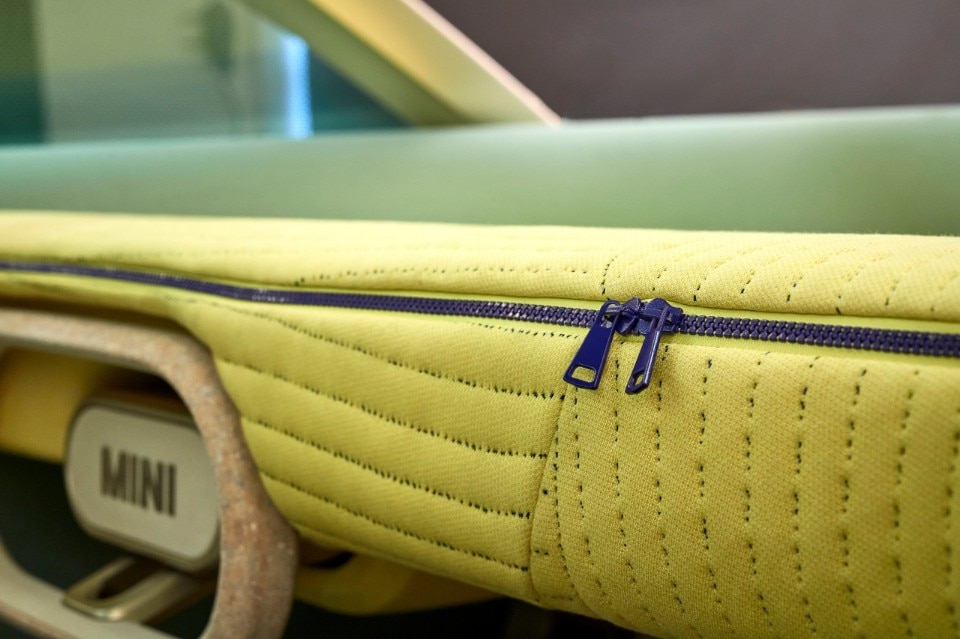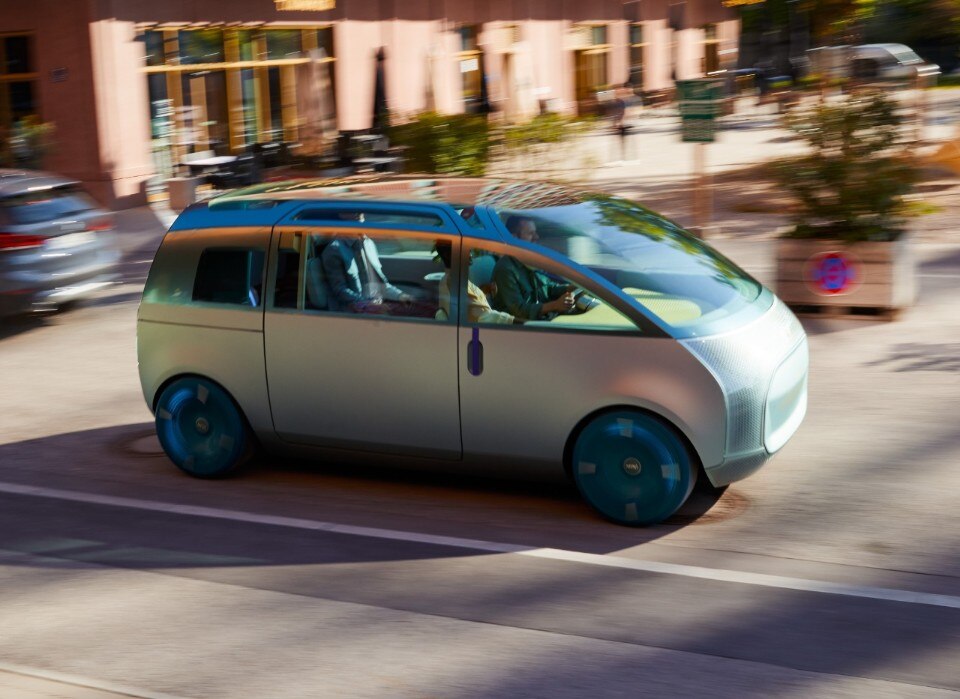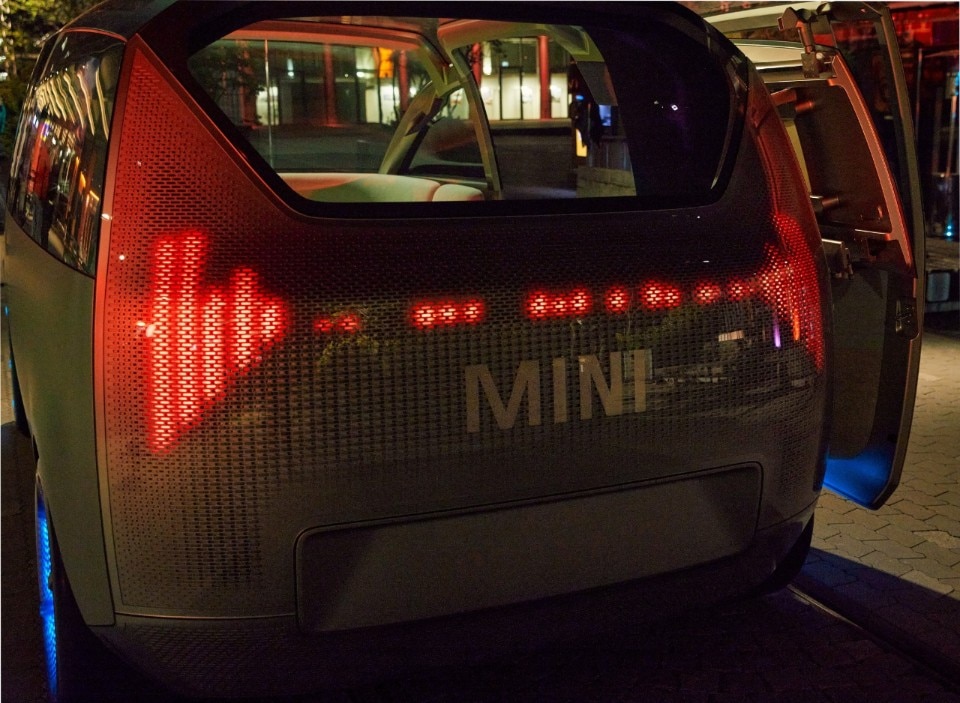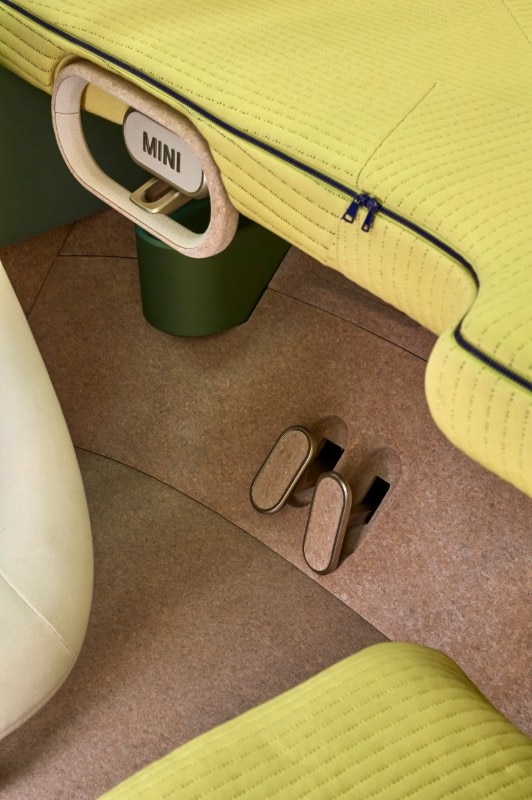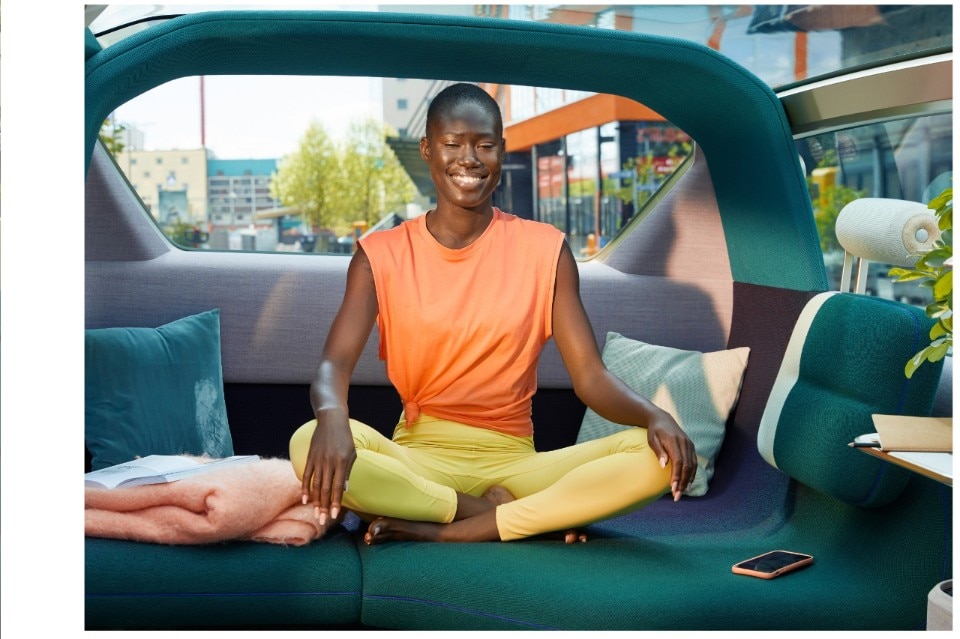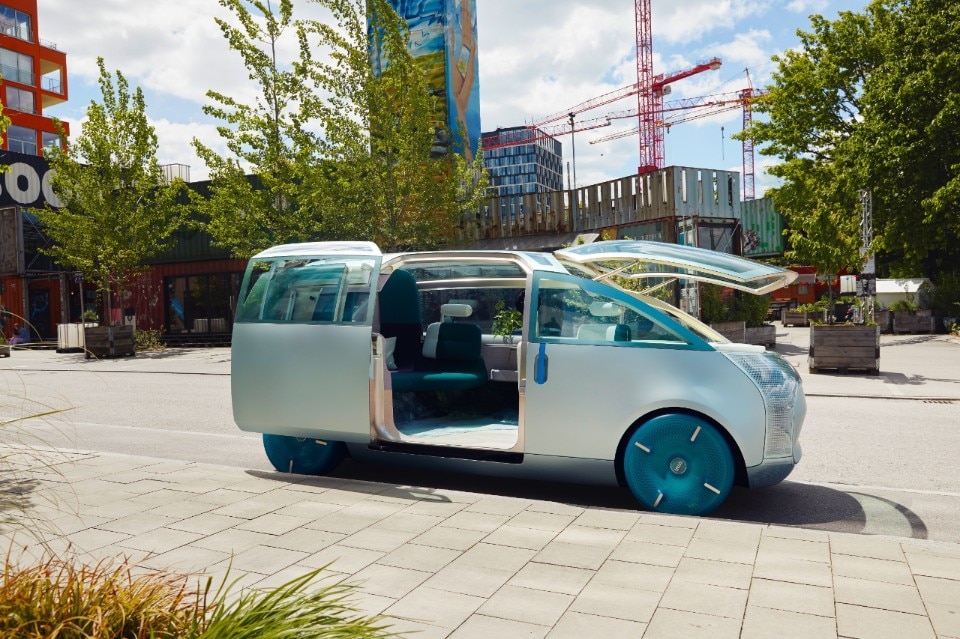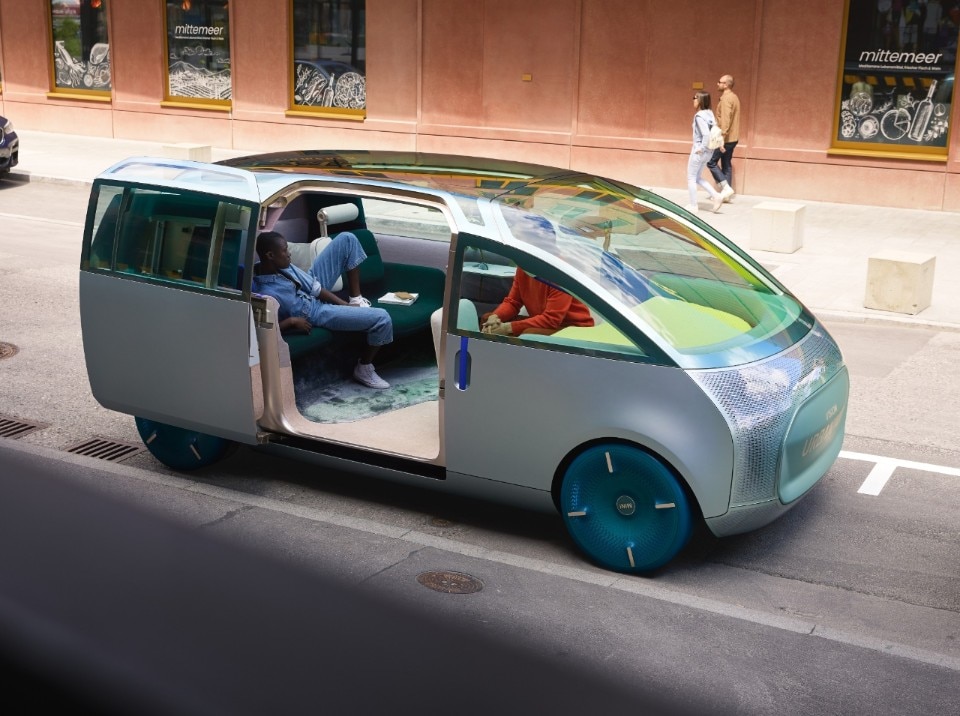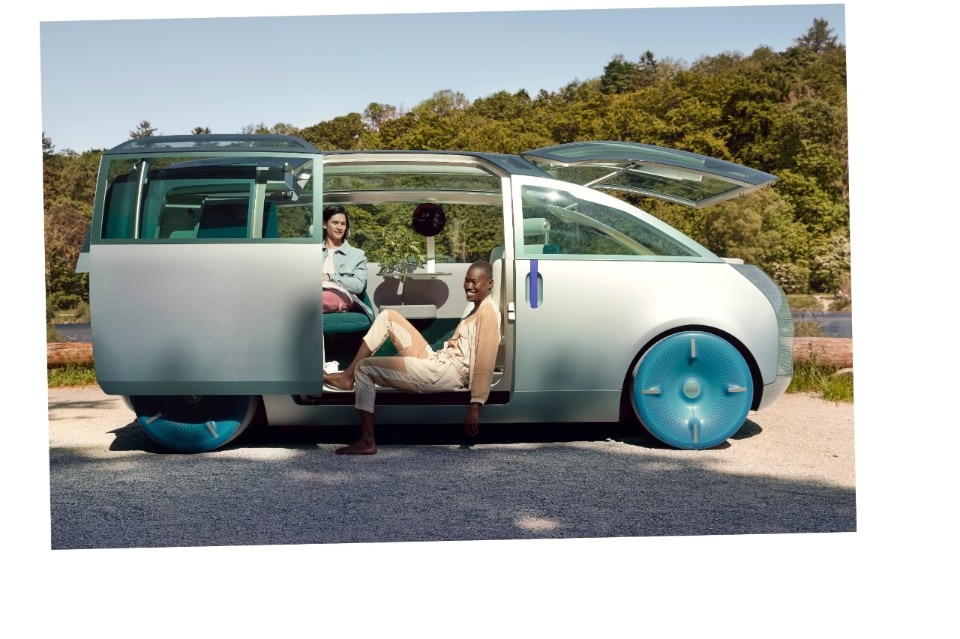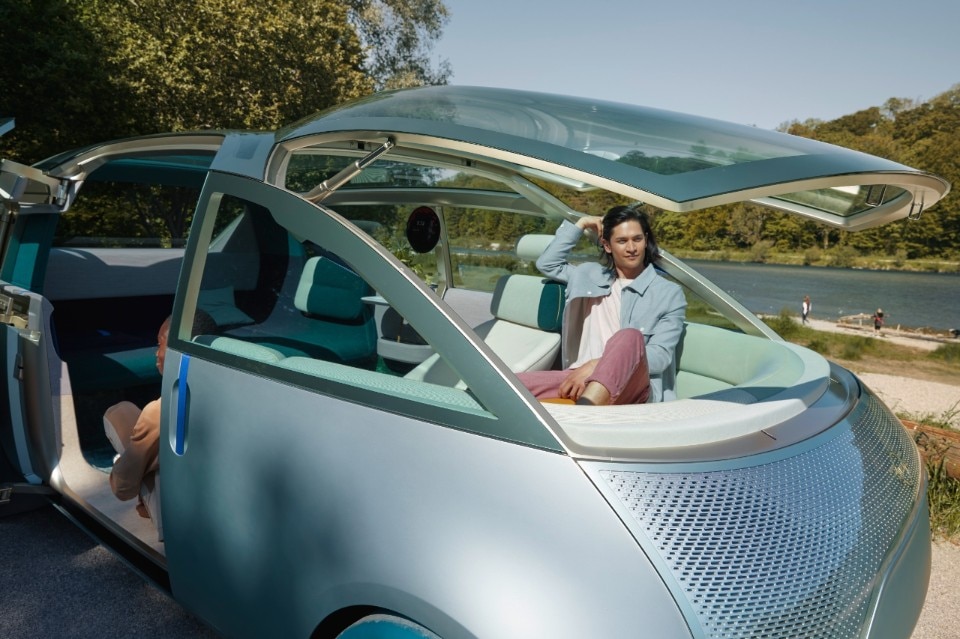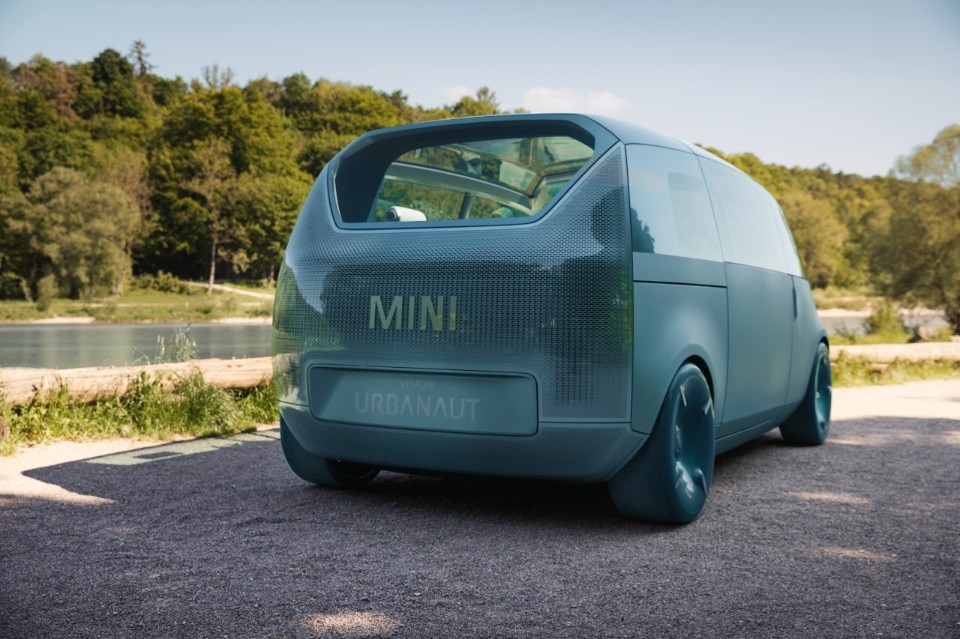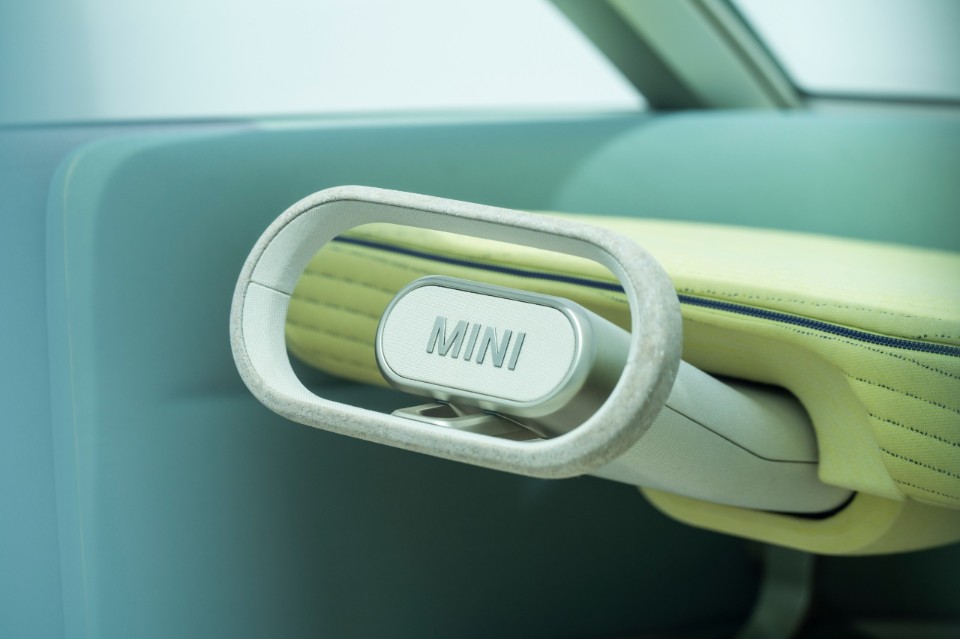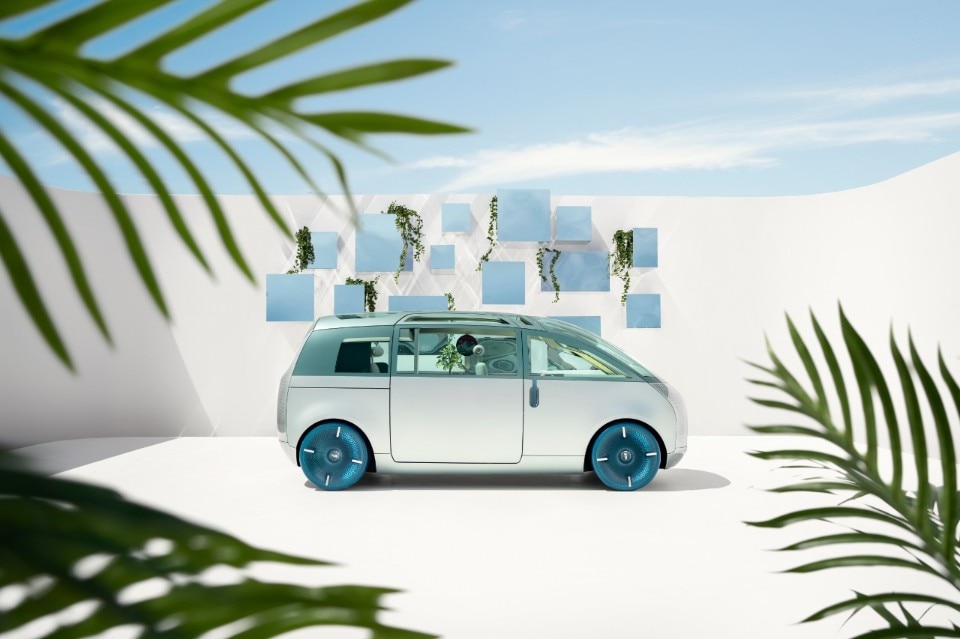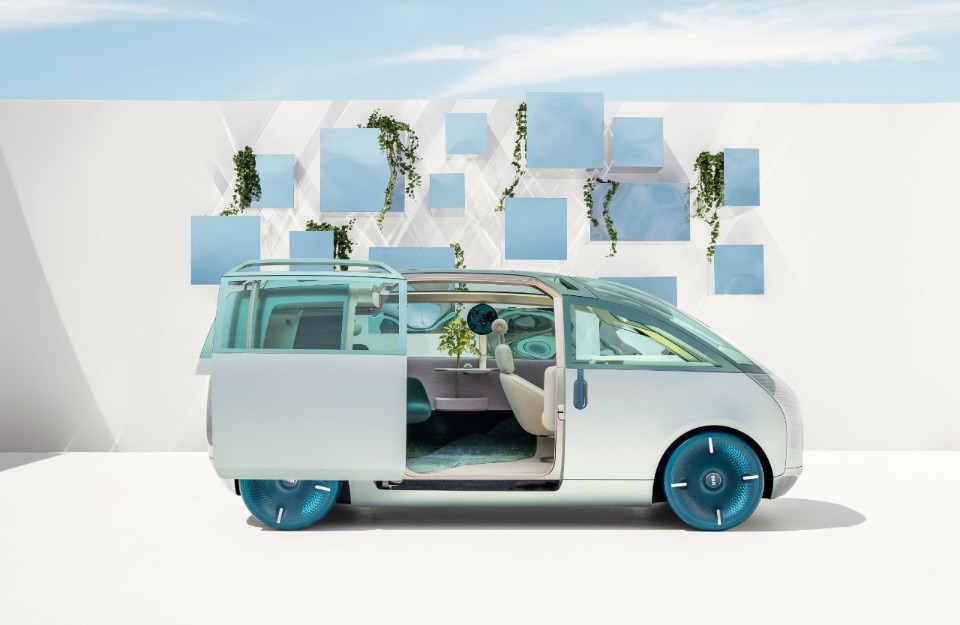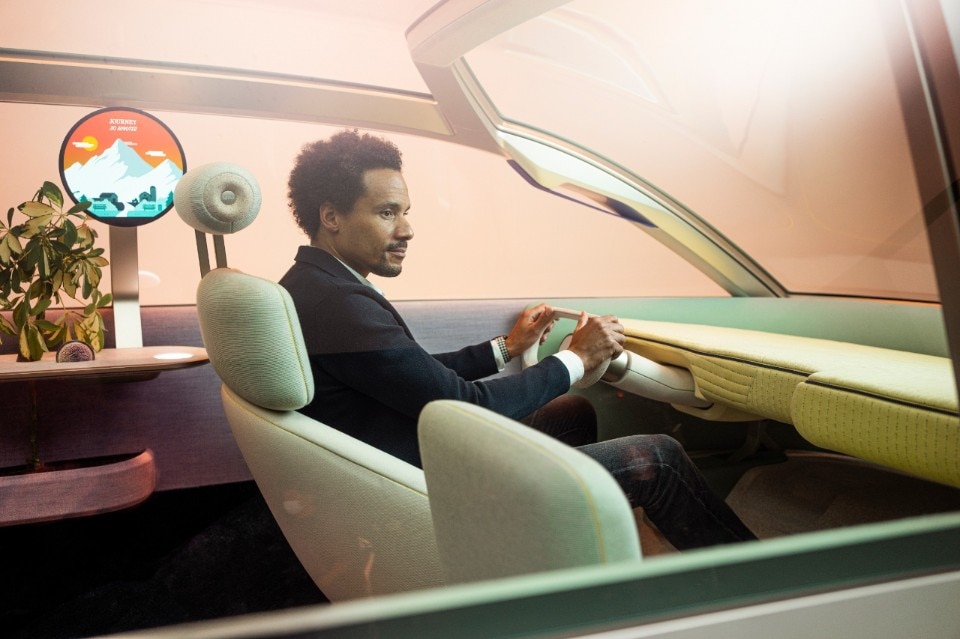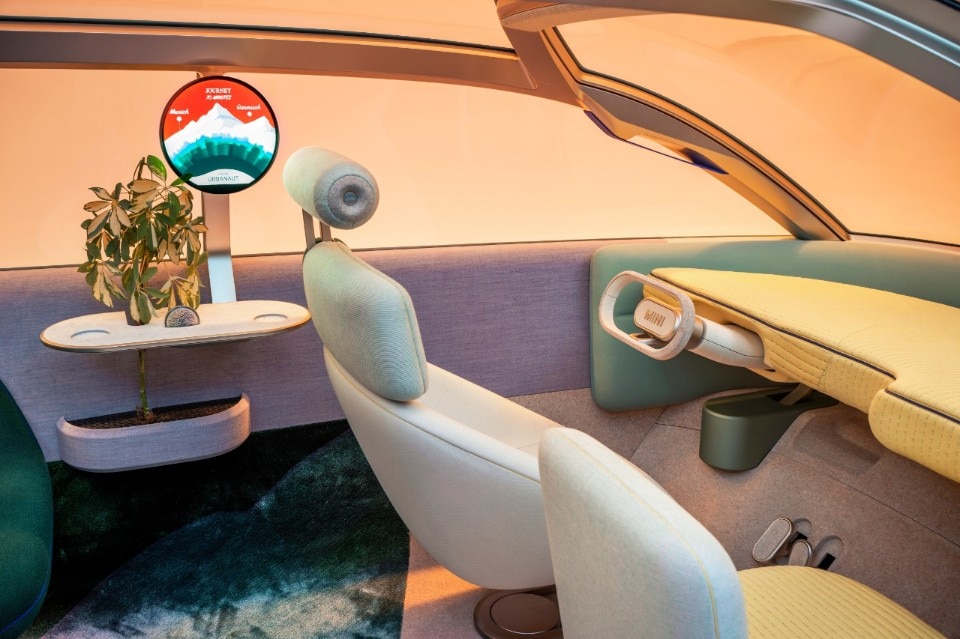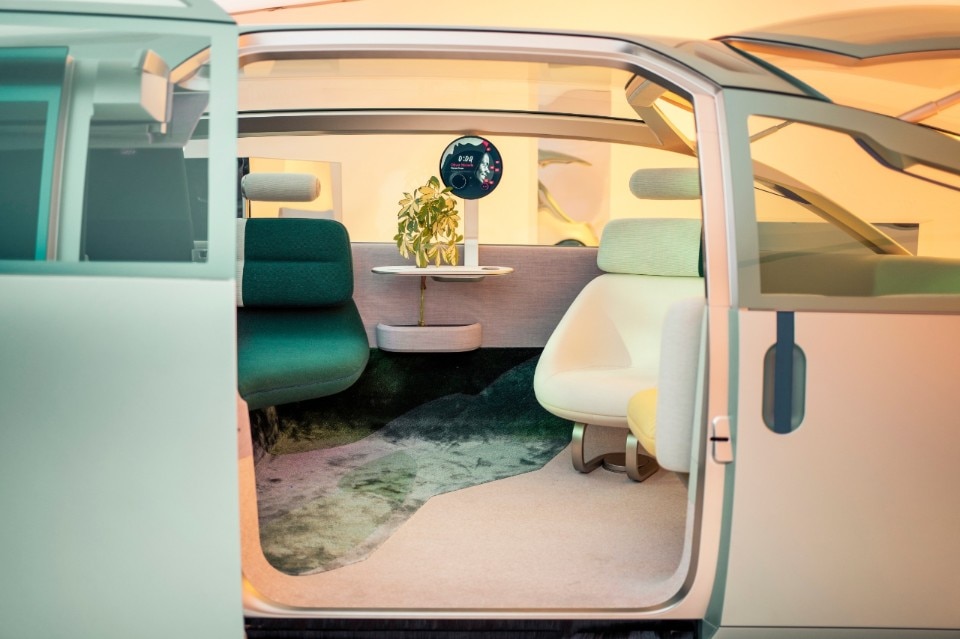BMW Group has unveiled a physical prototype of the Vision Urbanaut, a concept developed by Mini to explore the future of mobility through the innovative use of space. The pod-shaped car, which electric and (potentially) self-driving, is built around three modes, each one adapting the car’s shape and fixtures to different use cases, or Moments as Mini designers call them.
In Wanderlust mode, the car drives itself or is driven by the user, who can bring out the steering wheel and pedals with a tap of a finger on the Mini logo. In Vibe mode, the car turns into a movable music player. The dashboard controls become the multimedia centre, and an animation of graphic equalizers is projected onto surfaces of the front, rear, wheels and Loop above the rear seat bench.
When the party’s over, customers can relax in Chill mode. By activating this moment, the user can turn the car into a sort of retreat, with the comfy rear seat bench (also known as the Cosy Corner) becomes center stage. The car is no more just a vehicle but a space for relaxation. In the centre area, the main “circular instrument” can turn into a stand, hiding from view all the buttons and displays that would distract the user or remind them they’re still sitting in a car.
“At Mini we see it as our responsibility to preserve and develop the unique characteristics of our brand over the upcoming years and those further ahead,” says Bernd Körber, Head of Mini. “We have developed an idea, with the Mini Vision Urbanaut, of how we can take the Mini attributes – with the focus on the ‘Clever Use of Space’ – into the future of mobility and interpret them in a typically Mini way”.
BMW Group built the Vision Urbanaut Concept physical model to explore the future of the Mini brand. Although it won’t become a commercial model anytime soon, the prototype is fully drivable and steerable. All built with sustainable and green materials, the interiors were the centrepiece of the project. They were put together at the Mini Design Studio in Munich before the exterior was built. It’s a process of design from the inside out that is already widely applied by contemporary car designers and will grow more and more relevant in the industry in the following years, with the industry shifting to deliver a complete set of user experiences rather than sheer performance and technical specs.


